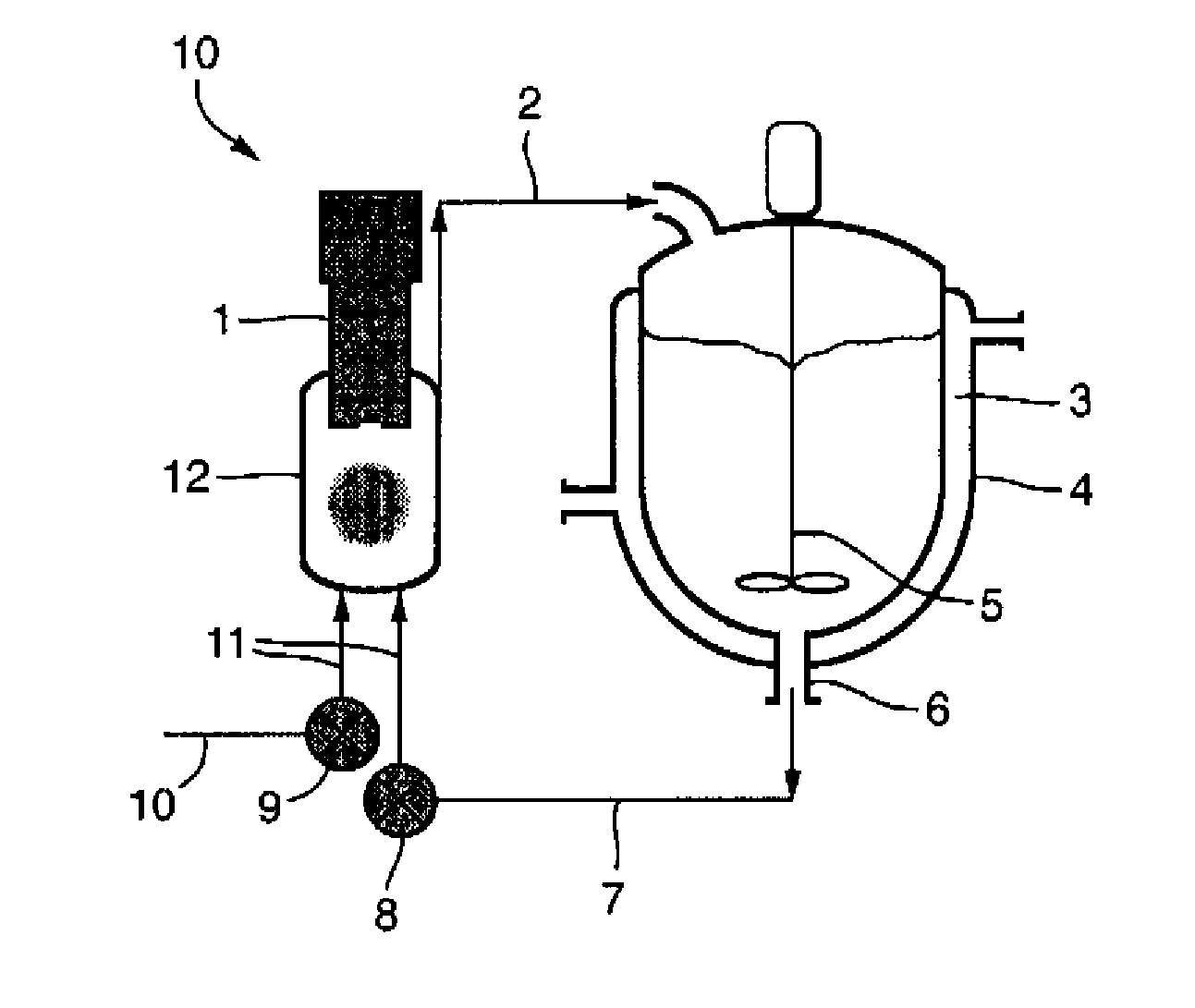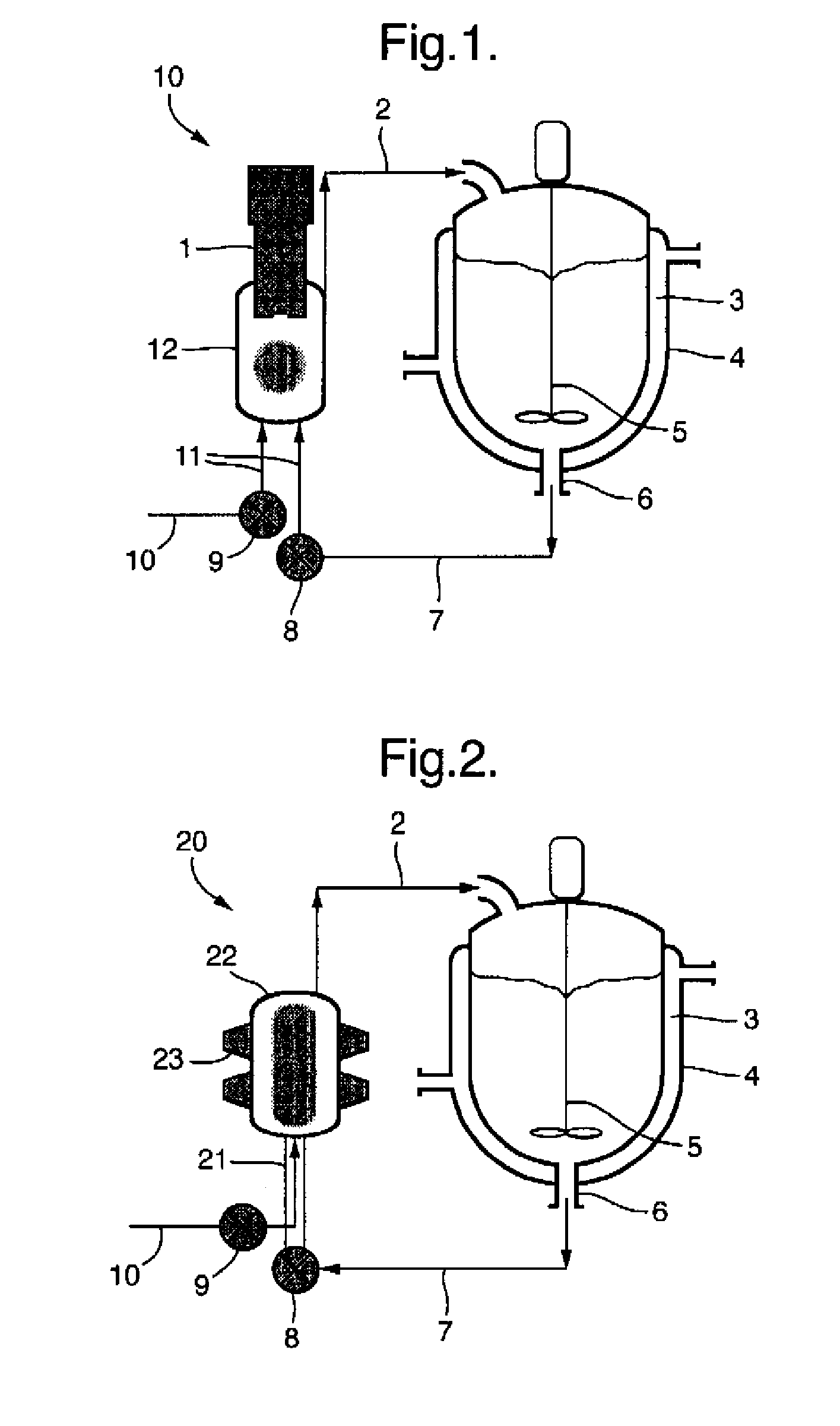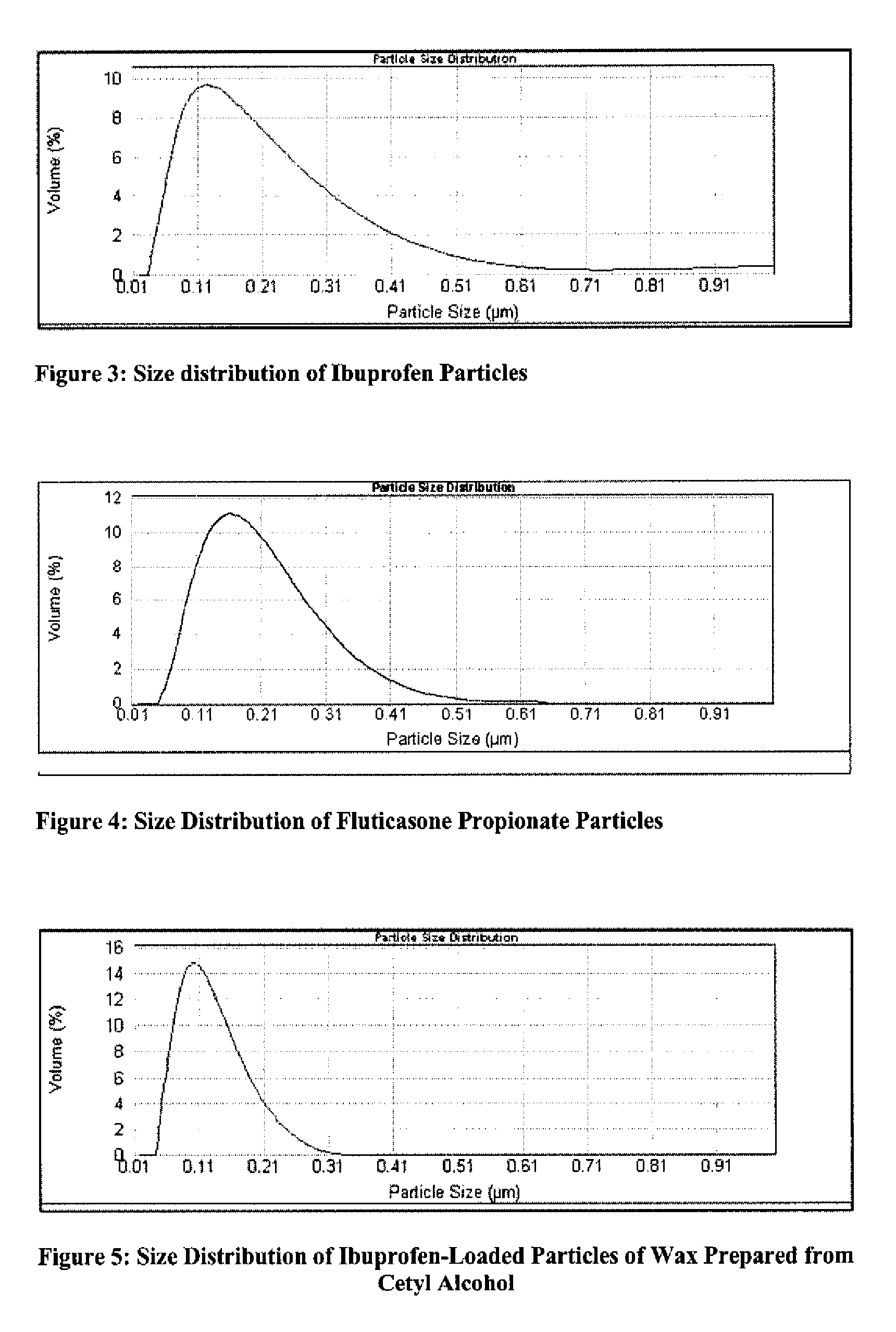Process for Making Crystals
- Summary
- Abstract
- Description
- Claims
- Application Information
AI Technical Summary
Benefits of technology
Problems solved by technology
Method used
Image
Examples
example 1
Ibuprofen Nanoparticles by Emulsion Crystallization and Evaporation
[0056]Water (800 mL) was charged to a 1 L stirred crystallizer fitted with a thermo-regulation jacket. The temperature was adjusted to 45° C. Water was pumped around a recirculation loop using a diaphragm pump (operating at 20 L / h) and a 250 ml thermo-regulated glass ultrasonic flow-cell fitted with a 30 mm diameter 20 kHz ultrasonic probe. The probe was held at the highest position in the flow-cell and sealed / clamped at a point of zero vibration (null point). The flow-cell was thermo-regulated at 45° C. Continuous ultrasound was applied at 15 W power, 5 micron amplitude. Ibuprofen (150 mg) was dissolved in dichloromethane (25 mL). The solution was dispersed in an aqueous phase held at 45° C. consisting of 800 ml of a 0.2% (w / v) solution of Tween 80. The dichloromethane solution was pumped into the ultrasonic flow-cell using a second inlet on the underside of the flow-cell at a rate of 20 ml / h. The resulting suspensi...
example 2
Fluticasone Propionate Nanoparticles by Emulsion Crystallization and Evaporation
[0057]Saline solution (0.5% w / w) was charged to a 1 L stirred crystallizer fitted with thermoregulation jacket. The temperature was adjusted to 45° C. Saline water was pumped around a recirculation loop using a diaphragm pump (operating at 20 L / h) and a 250 mL thermo-regulated glass ultrasonic flow-cell fitted with a 30 mm diameter 20 kHz ultrasonic probe. The probe was held at the highest position in the flow-cell and sealed / clamped at a point of zero vibration (null point). The flow-cell was thermo-regulated at 45° C. Continuous ultrasound was applied at 15 W power, 5 micron amplitude. Fluticasone propionate (0.5 g) was dissolved in dichloromethane (40 mL). The solution was dispersed in an aqueous phase held at 45° C. consisting of 800 mL of a 0.5% (w / w) saline solution. The dichloromethane solution was pumped into the ultrasonic flow-cell using a second inlet on the underside of the flow-cell at a rat...
example 3
Ibuprofen-Loaded Nanoparticles of Wax Prepared from Cetyl Alcohol
[0058]Water (1 L) was charged to a 1 L stirred crystallizer fitted with thermoregulation jacket. The temperature was adjusted to 55° C. Water was pumped around a recirculation loop using a diaphragm pump (operating at 20 L / h) and a 60 mL thermo-regulated glass ultrasonic flow-cell fitted with a 30 mm diameter 20 kHz ultrasonic probe. The probe was held at the highest position in the flow-cell and sealed / clamped at a point of zero vibration (null point). The flow-cell was thermo-regulated at 55° C. Continuous ultrasound was applied at 15 W power, 5 μm amplitude. Ibuprofen (0.2 g) was co-dissolved with cetyl alcohol (2 g) in acetone (10 mL). The solution was dispersed in an aqueous phase consisting of 1 L of a 0.3% (w / v) solution of Tween 80. The acetone solution was pumped into the ultrasonic flow-cell using a second inlet on the underside of the flow-cell at a rate of 20 mL / h. The resulting dispersion was cooled to 5° ...
PUM
| Property | Measurement | Unit |
|---|---|---|
| Temperature | aaaaa | aaaaa |
| Temperature | aaaaa | aaaaa |
| Temperature | aaaaa | aaaaa |
Abstract
Description
Claims
Application Information
 Login to View More
Login to View More - R&D
- Intellectual Property
- Life Sciences
- Materials
- Tech Scout
- Unparalleled Data Quality
- Higher Quality Content
- 60% Fewer Hallucinations
Browse by: Latest US Patents, China's latest patents, Technical Efficacy Thesaurus, Application Domain, Technology Topic, Popular Technical Reports.
© 2025 PatSnap. All rights reserved.Legal|Privacy policy|Modern Slavery Act Transparency Statement|Sitemap|About US| Contact US: help@patsnap.com



